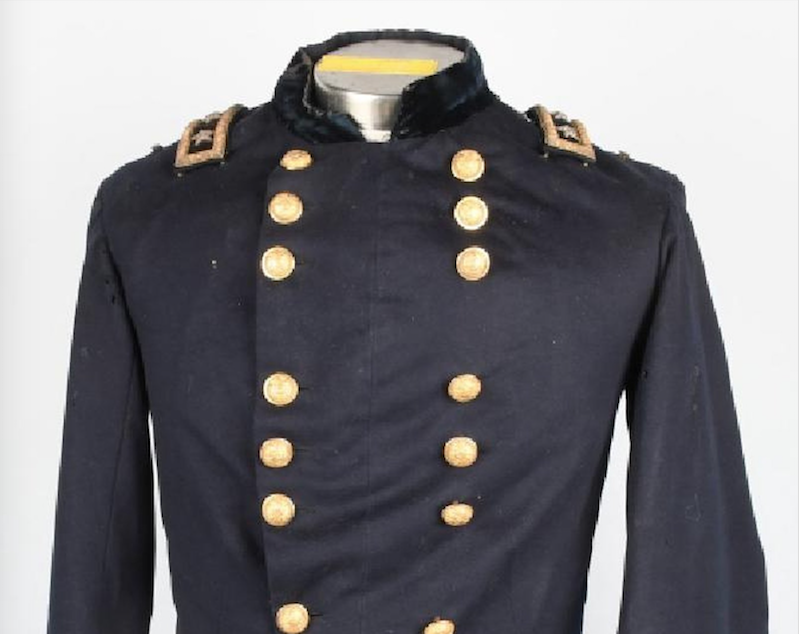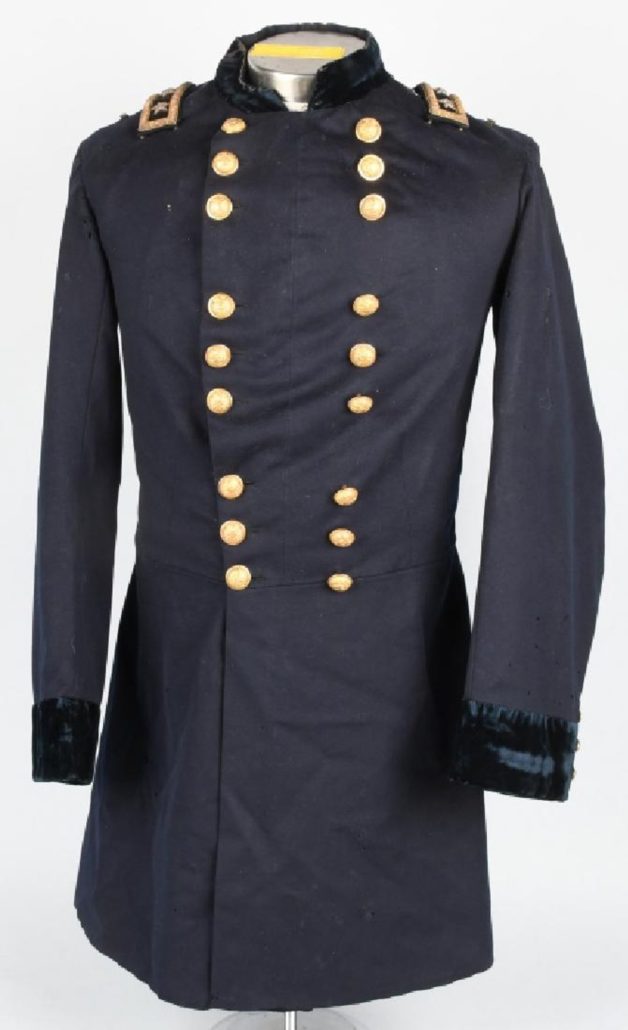
NEW YORK — The North may have won the Civil War, but when it comes to Civil War artifacts and memorabilia, the Confederacy seems to hold a strategic lead in terms of market share and desirability.
“The rarest and most expensive Civil War collectibles are Confederate, particularly cloth flags,” said Tony Lemut, a consignments consultant for Milestone Auctions in Willoughby (suburban Cleveland), Ohio. “Owing to their delicate nature, not many Union flags survived,” he said. Also, he added, most Union flags were returned to their respective states when the war ended, as they were considered government property.
Civil War items of key interest to collectors range from uniforms, including belt buckles and buttons, to firearms, battle flags, letters and battlefield photography. Among the most coveted are items made in the South, which had a more agrarian than industrial economy in the mid-19th century.
“When you find arsenal-made [items] in the South, those typically bring five-figure prices and up,” Lemut said. “To come across a weapon that was manufactured in one of the rare Confederate battle plants is very unusual.”
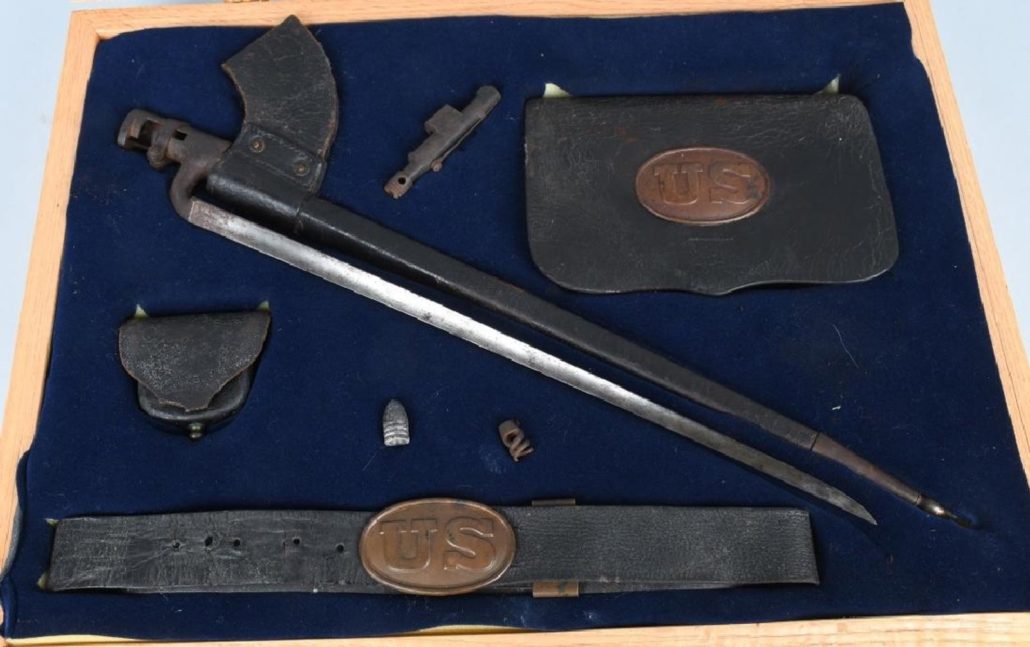
Because the Confederacy did not have much manufacturing capacity, many of their army’s weapons either were captured from Union soldiers during battles or imported from Europe. “Fewer [items] were made, so consequently the survival rate was not as great,” Lemut said, explaining Confederate weaponry’s scarcity as a whole.
People collect Civil War material for all sorts of reasons. Some become absorbed in the history behind the objects, while others seek out items that are related to their ancestors or regiments from the state or region where they live. But overall, collectors tend to get swept up in unique history of the Civil War itself. “The American Civil War captures the interest of historians and all Americans, really, like no other time period in the history,” Lemut said. “It’s the first war where there was photography. People can see for the first time in history what soldiers looked like and the battlefields where they fought.”

Among the dozens of flags representing the Confederate States of America, 1861-1865, there were three official national designs, the first being a 13-star flag on blue ground with three red and white stripes and known as the “Stars and Bars.” It was followed by “The Stainless Banner” featuring a large white background offset by a red square at top left containing a blue X-design having 13 stars. The third design, adopted in March 1865, combined the best of the earlier designs. It recreated the second design but added a wide red bar running vertically on the right side. This one was known as the “Blood-Stained Banner.”
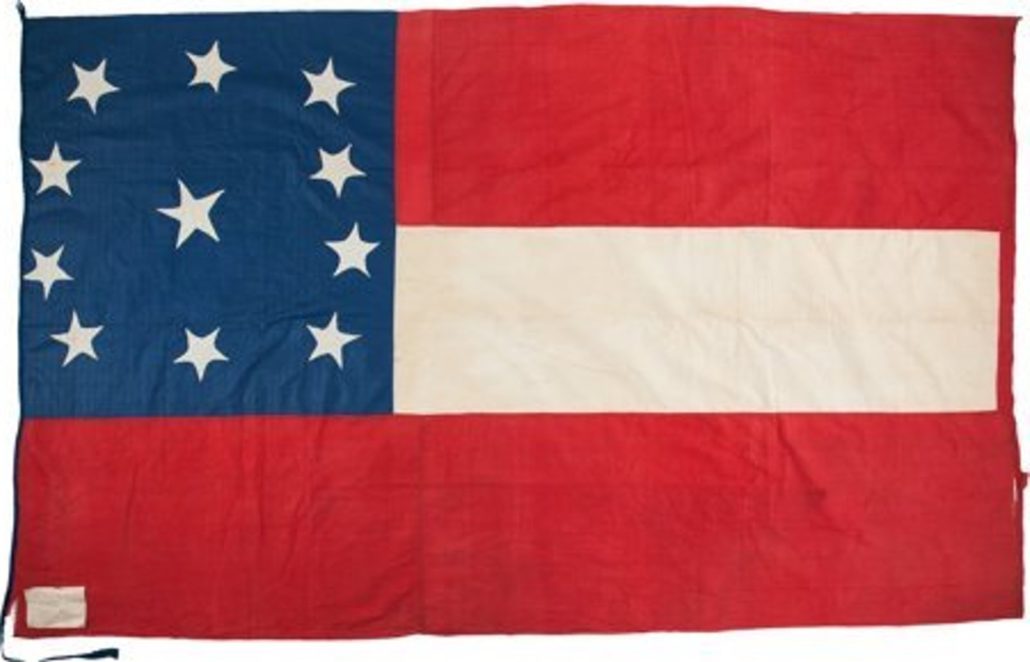
Aside from these three flags, many other individual regiment and battle flags were flown in the South during the war. A notable example is the Bonnie Blue Flag (perhaps inspiring the eponymous character in Gone with the Wind?) having a blue ground centered with a large five-point white star. The flag was reportedly the unofficial flag of the Confederacy before the first official one was adopted. Each Confederate state also had its own official flag.
Of the battle flags that individual regiments carried with them during the war, those that are regimentally marked are rare, Lemut said. “When you get into the Civil War there is a pecking order to desirability. The Army of Northern Virginia, which fought at Gettysburg and Antietam, is among the most sought after, he said. Other popular brigades include the Irish Brigade out of greater New York City, the Iron Brigade, and the 24th Michigan Volunteer Infantry Regiment.
Among firearms used during the Civil War, perhaps none is as famous or renowned as the Henry rifle, which was used by Union soldiers. Confederate troops reportedly called it “that damned Yankee rifle that loads on Sunday and shoots all week long!” The rifle could fire 16 rounds without reloading.
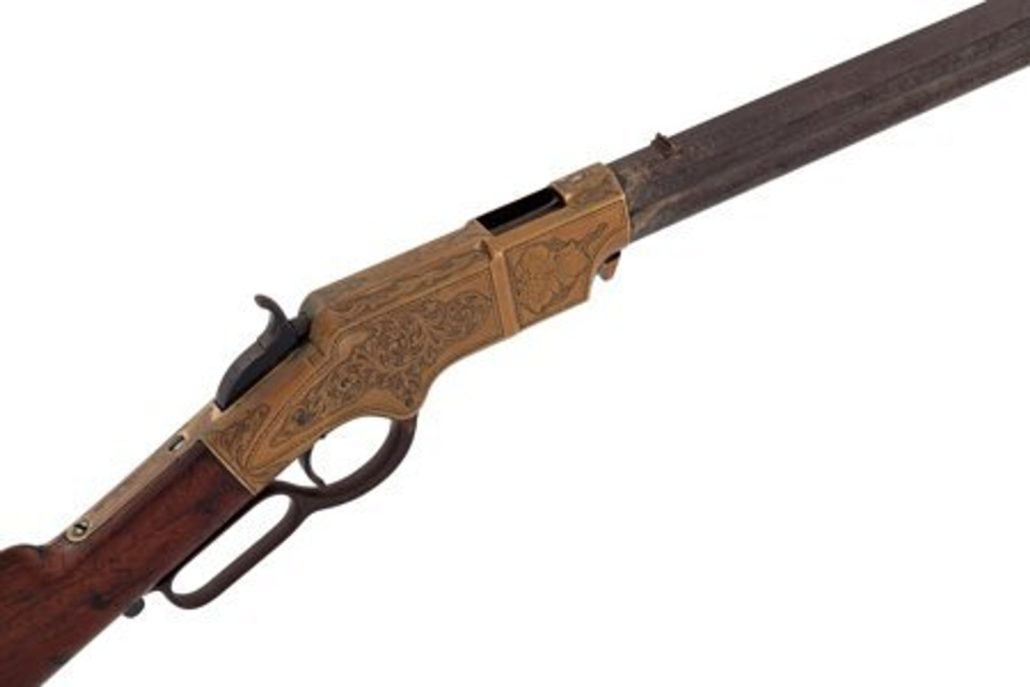
Lemut says new collectors of Civil War memorabilia should educate themselves and deal only with sellers who are trustworthy. “Fewer and fewer examples of this material are coming out of attics,” he said, noting that people will try to reproduce items to make them look old. One such example would be using century-old cloth to make fake uniforms. Or, even if an item is authentically of the period, they might try to attach an invented identity or history to it to boost its value. “You have to know what to look for before you buy,” he said.
# # #


